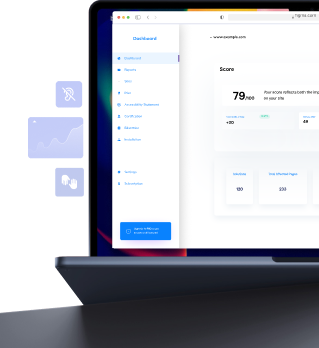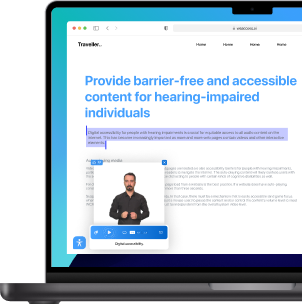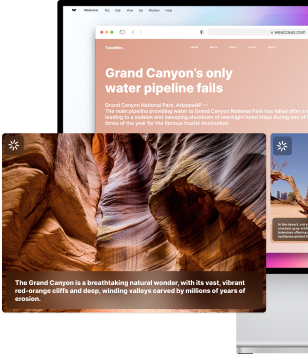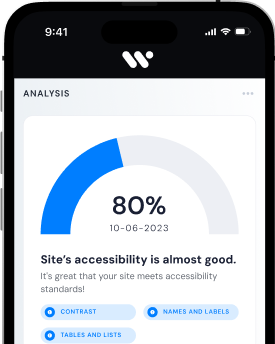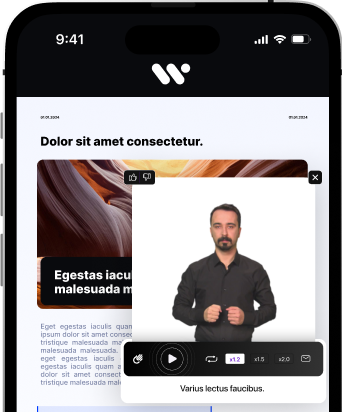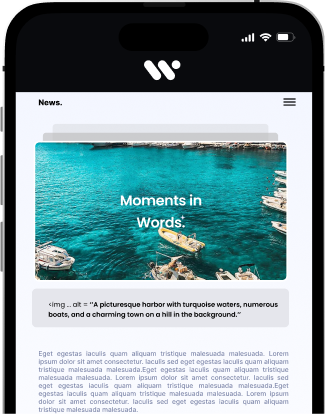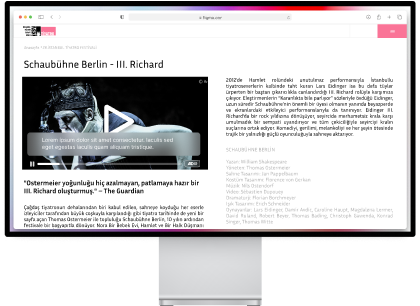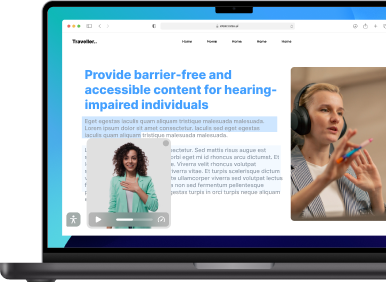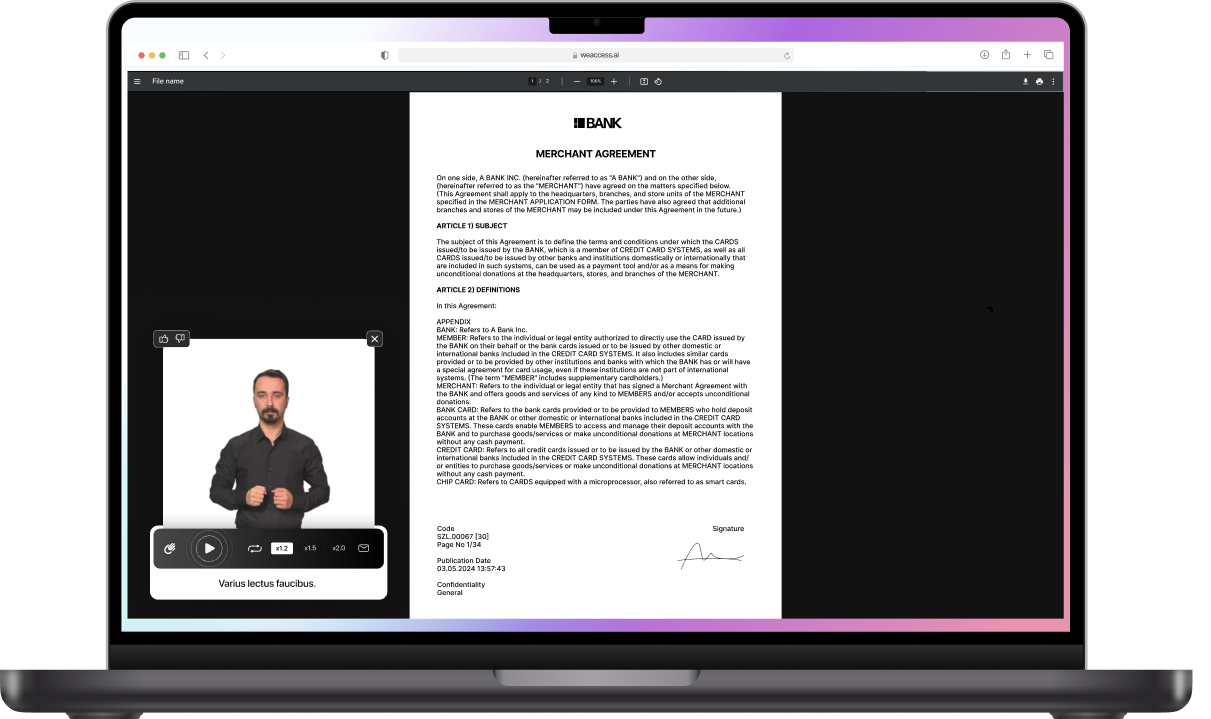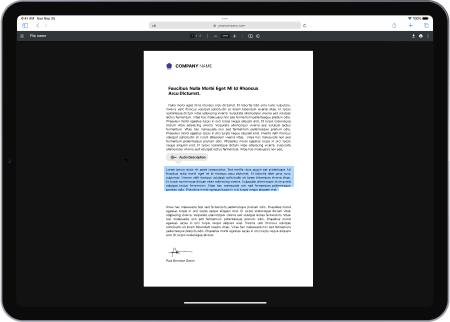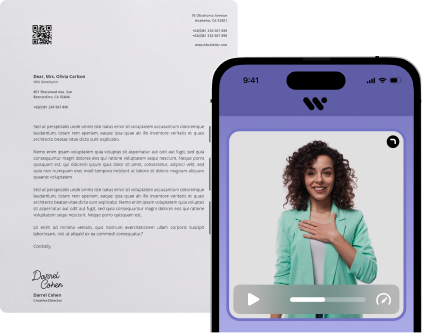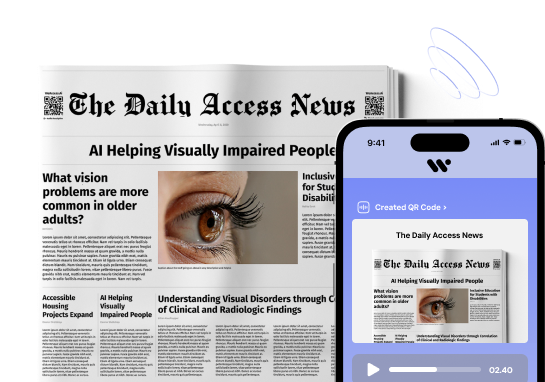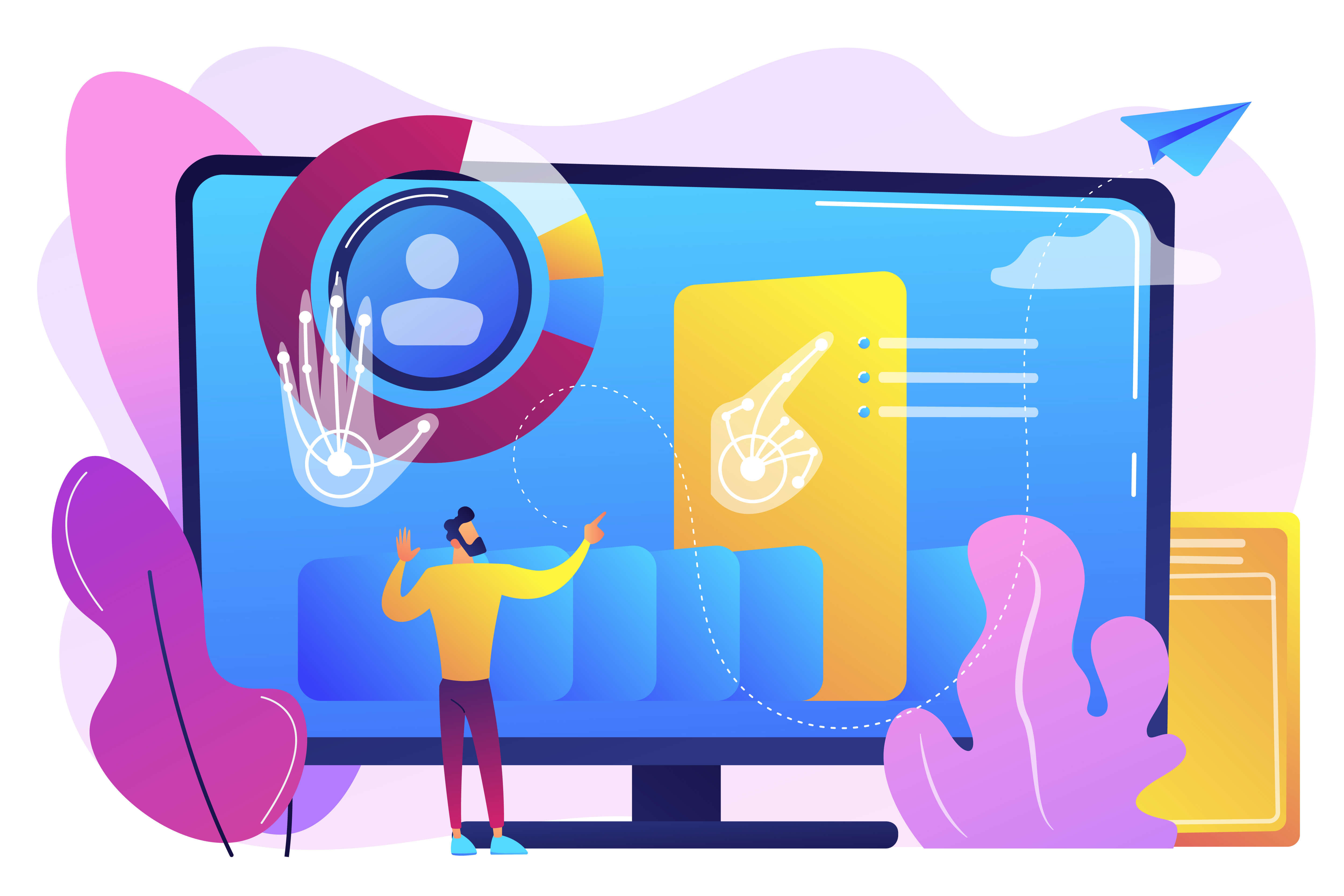Comprehensive Guide to Accessibility Monitoring and Evaluation
When it comes to ensuring website accessibility, a combination of manual testing and automated tools is essential. Automated accessibility testing can help to quickly scan through thousands of pages to identify issues, while manual testing allows for a more in-depth evaluation of the overall accessibility of a web application. In order to meet wcag 2.1 accessibility standards and wcag conformance, both approaches must be used to assess a website’s accessibility.
Using an accessibility scanner or accessibility crawler can help to automatically test web pages for adherence to wcag 2.0 success criteriauser journey through a web application, testers can ensure that the user experience is seamless for all users, regardless of accessibility regulations.
When conducting a web accessibility evaluation, it’s important to note that while automated testing can catch many issues, manual testing is still crucial for identifying nuanced accessibility tests. By utilizing both tools and methods, dev teams can ensure that their web application is truly an example of an accessible web.
Discover the essential strategies and tools for effective web accessibility monitoring, including scans, evaluations, and reports to create an inclusive web.
Understanding Accessibility Monitoring
Understanding Accessibility Monitoring can greatly benefit the accessibility initiative of any website. By monitoring the success criteria of wcag standards, businesses can ensure that their user journey is smooth and inclusive. Monitoring the accessibility of websites involves checking each pdf, number of pages, and centimeter of the site to remove accessibility barriers. An automated crawler can help identify any accessibility violations and provide an overall accessibility score.
Testing covers accessibility services and accessibility statements to ensure that the site meets wcag 2.1 level compliance across all conformance levels. This helps businesses, especially small businesses, to achieve greater accessibility and usability for all users. By addressing any issues found and highest accessibility standards, developers can safeguard their site and improve the compliance level of their content.
Introduction to Accessibility Monitoring
Accessibility monitoring is crucial in ensuring that websites and applications are usable for all users, including those with disabilities. Developers can use automated website scans to test their websites against the WCAG guidelines and quickly address any issues that may arise. Using dashboards and data visualization, developers can easily access information about the website and create a plan to improve accessibility. This process is essential for both small businesses and large enterprises to provide an inclusive user experience for all.
Importance of Accessibility Monitoring for Digital Inclusivity
Developers and content creators need to create websites and apps that are accessible to users with disabilities. One way to ensure digital inclusivity is by using an automated accessibility monitoring tool to test the website against WCAG guidelines set by the W3C Web Accessibility Initiative. This allows developers to address any accessibility issues quickly and efficiently.
Key Benefits of Regular Web Accessibility Monitoring
One of the key benefits of regular web accessibility monitoring is the ability for developers and content creators to quickly and efficiently identify any barriers that may exist for users with disabilities on their websites and apps. By testing the website against WCAG guidelines using an automated tool, developers can easily pinpoint areas that need to be addressed in order to ensure compliance with the W3C Web standards. This can help developers to address accessibility issues in a timely manner and create a more inclusive online experience for all users.
Types of Accessibility Scans
There are several types of accessibility scans that can be used to test the usability and compliance of a website or application. These include automated scans, which use software tools to identify potential issues, manual scans conducted by human testers, and combination scans that utilize both automated and manual testing methods. Each type of scan has its own advantages and limitations, and they can be tailored to address specific accessibility requirements and guidelines.
Automated vs. Manual Accessibility Scans
When it comes to ensuring accessibility on a website, there are two main approaches to conducting scans: automated and manual. Automated scans use tools and software to quickly identify accessibility issues on a website, making them efficient for large-scale audits. However, manual scans involve a human tester thoroughly reviewing a website for accessibility barriers, providing a more nuanced and comprehensive assessment. While automated scans can catch common issues, manual scans are essential for detecting subtle problems that may be overlooked by automated tools.
Role of Accessibility Evaluation Tools in Scanning
Accessibility evaluation tools play a crucial role in scanning websites and digital content for compliance with accessibility standards. These tools allow developers and content creators to identify and address barriers that may prevent individuals with disabilities from accessing and using the information provided. By automatically scanning websites for WCAG guidelines and highlighting areas that need improvement, these tools help ensure that digital content is inclusive and accessible to all users. Additionally, accessibility evaluation tools provide valuable feedback and recommendations for making necessary adjustments to improve accessibility.
WCAG Compliance and Accessibility Issues
In today's digital age, it is crucial for websites to ensure WCAG Compliance to make their content accessible to all users, including those with disabilities. Failure to adhere to these guidelines can result in accessibility issues for individuals who rely on assistive technologies to navigate the web. By following WCAG Compliance standards, businesses and organizations can reach a wider audience and demonstrate their commitment to inclusivity and diversity. It is not only a legal requirement in many countries, but also a moral responsibility to ensure equal access to information and services online.
WCAG and ADA Compliance
WCAG (Web Content Accessibility Guidelines) are a set of standards developed by the World Wide Web Consortium (W3C) to ensure web content is accessible to individuals with disabilities. These guidelines provide a framework for creating accessible websites and applications by addressing areas such as navigation, text alternatives for non-text content, and keyboard accessibility. ADA (Americans with Disabilities Act) Compliance refers to adherence to the regulations set forth in the Americans with Disabilities Act, which prohibits discrimination against individuals with disabilities in all areas of public life, including websites and online services.
Overview of WCAG 2.2 Standards
WCAG 2.2 Standards are the latest guidelines for web accessibility provided by the W3C. These standards aim to make the internet more accessible to people with disabilities. WCAG 2.2 includes updates to address new technologies and digital experiences, ensuring that websites and web content are perceivable, operable, understandable, and robust. By following these guidelines, developers can create websites that are inclusive and user-friendly for all individuals, regardless of their abilities.
Ensuring ADA Conformance through Accessibility Monitoring
Ensuring ADA Conformance through Accessibility Monitoring is crucial for organizations to guarantee equal access to all individuals, including those with disabilities. By conducting regular accessibility monitoring assessments, businesses can identify and address any potential barriers that may prevent people from fully participating in their services or products. This proactive approach not only helps companies comply with ADA regulations, but also demonstrates a commitment to inclusivity and diversity. Moreover, maintaining ADA conformance through accessibility monitoring can enhance the overall user experience and improve customer satisfaction.
Addressing Common Accessibility Issues
An accessibility audit is a thorough assessment of a website, application, or digital content to ensure that it is usable by people with disabilities. It involves evaluating the site's adherence to WCAG guidelines, identifying barriers to access, and recommending solutions to improve accessibility. Conducting an evaluation allows organizations to understand how inclusive their digital products are and make the necessary adjustments to reach a wider audience. By prioritizing accessibility, companies can create a more inclusive and user-friendly online experience for all visitors.w
Accessibility Audit and Evaluation
Obtaining and reporting accessibility data is pivotal for comprehending the accessibility status of digital resources and initiating timely remediation efforts.
Conducting a Thorough Web Accessibility Audit
Conducting a thorough web accessibility audit is crucial for ensuring that your website is inclusive and usable for all visitors. A comprehensive audit involves reviewing various aspects of the site, including WCAG guidelines, alt text for images, keyboard navigation functionality, and color contrast for readability. By identifying and addressing any barriers to access, you can improve the overall user experience and demonstrate a commitment to inclusivity and diversity.
Utilizing Accessibility Evaluation Tools for Accurate Reporting
Utilizing Accessibility Evaluation Tools can greatly improve the accuracy of reporting on a website's accessibility compliance. These tools help identify potential barriers that may prevent individuals with disabilities from accessing and using the website effectively. By running regular checks with automated tools, website owners can ensure that their site is inclusive and meets the required accessibility standards. The data provided by these tools can also help prioritize improvements and track progress over time, leading to a more accessible and user-friendly website.
Prioritizing Accessibility Issues for Remediation
When prioritizing accessibility issues for remediation, it is important to consider the impact on users and the severity of the issue. Start by identifying WCAG guidelines that are being violated and prioritize fixing issues that have the biggest impact on users with disabilities. It is also crucial to address issues that are common across multiple pages or sections of a website to ensure a consistent and accessible user experience. By prioritizing accessibility issues for remediation, you can improve the overall usability and inclusivity of your website.
Monitoring and Reporting for Digital Accessibility
Monitoring and Reporting for Digital Accessibility is crucial in ensuring that websites and digital platforms are accessible to all users, including those with disabilities. By regularly monitoring the accessibility features and functionalities of a website, organizations can identify any barriers or issues that may hinder users with disabilities from accessing information or services. Reporting on these findings allows for continual improvement and optimization of digital accessibility efforts, ultimately leading to a more inclusive and user-friendly online experience for all.
Continuous Monitoring and Reporting
Continuous monitoring and reporting is essential for ensuring that organizations stay informed about their operations and performance on a regular basis. By implementing continuous monitoring processes, organizations can proactively identify any anomalies or issues in real time, allowing them to take immediate corrective action. This approach helps organizations to maintain compliance with regulations and standards, as well as improve their overall efficiency and effectiveness. Through continuous reporting, organizations can track key performance indicators and generate reports that provide valuable insights for decision-making and strategic planning.
Setting Up Effective Web Accessibility Monitoring Systems
Setting up effective web accessibility monitoring systems is crucial for ensuring that websites are accessible to all users, including those with disabilities. One key aspect of this is using automated tools to regularly scan websites for accessibility issues. Manual testing by individuals with disabilities is also important to identify any usability barriers. Another important element is establishing a monitoring schedule to ensure that websites remain accessible over time. By implementing these monitoring systems, organizations can better fulfill their commitment to providing an inclusive online experience for all users.
Monitoring and Reporting: Generating Actionable Insights
Monitoring and reporting are crucial components of any successful business operation. By constantly monitoring key performance indicators, businesses can identify trends and patterns that may impact their bottom line. This data can then be used to generate actionable insights that can drive strategic decision-making. Through comprehensive reporting, businesses can track progress towards their goals and make necessary adjustments to ensure success. By effectively monitoring and reporting, businesses can stay ahead of the curve and make informed decisions that lead to growth and profitability.
Setting Up Effective Web Accessibility Monitoring Systems
Setting up effective web accessibility monitoring systems is crucial for ensuring that websites are accessible to all users, including those with disabilities. One key aspect of this is using automated tools to regularly scan websites for accessibility issues. Manual testing by individuals with disabilities is also important to identify any usability barriers. Another important element is establishing a monitoring schedule to ensure that websites remain accessible over time. By implementing these monitoring systems, organizations can better fulfill their commitment to providing an inclusive online experience for all users.
Understanding Your Accessibility Score
Understanding your Accessibility Score is crucial for ensuring that your website is accessible to all users, including those with disabilities. This score evaluates how well your website conforms to web accessibility guidelines such as WCAG (Web Content Accessibility Guidelines). By regularly monitoring and improving your score, you can make your website more inclusive and user-friendly for everyone. Paying attention to accessibility not only improves the user experience, but it can also help your website rank higher in search engine results.
Accessibility Dashboards and Reporting Tools
Accessibility Dashboards provide a comprehensive overview of a website's compliance with accessibility standards such as WCAG (Web Content Accessibility Guidelines). These dashboards display key metrics and insights on accessibility issues, allowing website owners to track progress and prioritize areas for improvement. Reporting Tools offer detailed reports on accessibility testing results, highlighting specific violations and suggesting remediation strategies. By using these tools, organizations can ensure that their websites are accessible to all users, including those with disabilities.
Leveraging Accessibility Dashboards for Real-Time Monitoring
Accessibility dashboards are a crucial tool for organizations looking to monitor and improve the accessibility of their digital content. By utilizing real-time monitoring through these dashboards, companies can quickly identify areas that need improvement and make necessary changes to ensure their websites and platforms are accessible to all users. With features such as live updates and data visualization, accessibility dashboards provide valuable insights that can help organizations prioritize accessibility initiatives and track progress over time.
Furthermore, accessibility dashboards allow organizations to measure the impact of their accessibility efforts, identify trends in user behavior, and address any issues that may arise. This real-time monitoring capability enables organizations to make timely adjustments and ensure that their digital content remains accessible to everyone, regardless of disabilities or limitations. By leveraging accessibility dashboards, organizations can demonstrate their commitment to inclusivity and improve the overall user experience for all individuals.
In summary, accessibility dashboards are a powerful tool for organizations seeking to enhance the accessibility of their digital content. By incorporating real-time monitoring capabilities, companies can stay proactive in their efforts to meet accessibility standards and ensure an inclusive online experience for all users. The insights provided by accessibility dashboards can guide organizations in prioritizing accessibility initiatives, measuring the impact of their efforts, and making informed decisions to continuously improve accessibility across all digital platforms.
Comprehensive Accessibility Reporting: From Detection to Action
Comprehensive Accessibility Reporting: Ensuring digital accessibility for all users is essential in today's digital age. From detecting accessibility issues to taking action to remedy them, comprehensive accessibility reporting plays a crucial role in ensuring that websites and online platforms are accessible to everyone, including those with disabilities. It involves thorough testing and analysis to identify barriers to access and prioritize improvements that will enhance the user experience for all individuals.
Detection of Accessibility Issues: Detection of accessibility issues involves using automated tools and manual testing methods to identify barriers to access on websites and online platforms. This process helps in understanding the areas that need improvement in order to ensure that all users, including those with disabilities, can effectively navigate and interact with digital content.
Action to Remedy Accessibility Barriers: Once accessibility issues are detected, action must be taken to remedy them. This can include making changes to website code, content, or design elements to ensure that all users can access and use the digital content without barriers. Taking prompt action to address accessibility barriers is essential in creating an inclusive online environment for all users.
Importance of Comprehensive Reporting: Comprehensive accessibility reporting provides valuable insights into the accessibility status of websites and online platforms. It helps in identifying areas for improvement and tracking progress towards making digital content more accessible to everyone. By prioritizing accessibility and taking proactive measures to address barriers, organizations can ensure that all users can fully engage with their online content without facing limitations due to accessibility issues.
Tools and Resources for Digital Accessibility
When it comes to ensuring digital accessibility, having the right tools and resources is essential. Screen readers are crucial for those with visual impairments, while alternative text descriptions provide context for images. Color contrast checkers help ensure content is readable for all users, and keyboard navigation tools make websites more accessible for those who cannot use a mouse. These are just a few examples of the tools and resources available to help create a more inclusive online experience for everyone.
Comparison of Popular Accessibility Monitoring Tools
When it comes to popular accessibility monitoring tools, there are several options available on the market. Among the most well-known tools are Siteimprove, WAVE, Axe, and Tenon. Each of these tools has its own unique features and benefits
Best Practices for Utilizing App Testing Tools
When it comes to app testing tools, following best practices is crucial to ensure the efficiency and accuracy of the process. One important aspect is to utilize tools like Userway that can help to automate testing tasks and provide valuable insights. Splitting the testing process into smaller sections can also make it more manageable and allow for a more thorough examination of the app's functionality. Additionally, generated text can be employed to simulate real user interactions and detect any potential issues before the app is released to the public.
Strategies for Ongoing Accessibility Improvements
Regular training sessions for employees on accessibility guidelines can ensure that everyone is up to date on the latest strategies. Additionally, conducting regular accessibility audits can help identify areas for improvement and prioritize updates. Creating an accessibility task force within the organization can also provide ongoing support and accountability. Finally, seeking feedback from users with disabilities can offer valuable insights into areas that may need further attention.
Accessibility Resources for Developers and Designers
Accessibility resources for developers and designers are crucial in ensuring that websites and apps are usable for all individuals, including those with disabilities. These resources provide guidelines and tools to help create accessible digital experiences, such as WCAG standards and screen reader compatibility considerations. By utilizing these resources, developers and designers can improve the usability and inclusivity of their products, ultimately creating a better experience for all users.
Future Trends in Accessibility Monitoring and Evaluation
In the future, accessibility monitoring and evaluation will become more advanced with the use of artificial intelligence and machine learning algorithms to analyze websites and digital content for accessibility compliance. This will allow for more detailed and accurate assessments of web accessibility issues, leading to improved user experiences for individuals with disabilities. Additionally, there will likely be a greater emphasis on automated testing tools and integration with development processes to ensure ongoing compliance and accessibility improvements.
Actionable Steps for Improving Accessibility
1. Conduct a thorough assessment: Start by assessing your current website or application for accessibility issues. Consider using various tools and resources, such as screen readers and keyboard navigation, to identify areas that may need improvement.
2. Implement alt text for images: Make sure all images on your website have descriptive alt text that can be read by screen readers. This will help visually impaired users understand the content of the images.
3. Provide clear and concise headings: Use HTML heading tags to properly structure your content. This will make it easier for all users, including those using screen readers, to navigate through your website.
4. Test with a diverse group of users: Once you have made improvements, it is important to test your website with a diverse group of users, including those with disabilities. This can help you identify any remaining accessibility issues and ensure that all users can easily access and navigate your website.
Prioritize and Remediate Accessibility Issues
When tackling accessibility issues on a website or digital platform, it is important to prioritize them based on their impact and severity. Issues that prevent individuals with disabilities from accessing and using the content should be remediated first. This may include problems with navigation, images without alternative text, or lack of keyboard accessibility. By addressing these high-priority issues first, you can ensure that your platform is more inclusive and usable for all users.
Utilizing Accessibility Score to Guide Improvements
Utilizing Accessibility Score is essential in guiding improvements on websites and applications. By analyzing the score, developers can identify areas that need to be enhanced to make their platforms more inclusive and user-friendly. This can lead to a better overall user experience and ensure that all individuals, regardless of their abilities, can access the content easily. Implementing changes based on the Accessibility Score can also help organizations comply with accessibility guidelines and avoid potential legal issues.
Building a Culture of Accessibility within Your Organization
Creating a culture of accessibility within your organization involves making intentional efforts to ensure that everyone, regardless of their abilities, can fully participate and contribute. This includes providing accommodations for individuals with disabilities, implementing inclusive design practices, and fostering a supportive and understanding environment for all employees. By acknowledging the diverse needs of your workforce and taking proactive steps to address them, you can create a more inclusive and equitable workplace for everyone.
You may be interested accessibility remedation !

